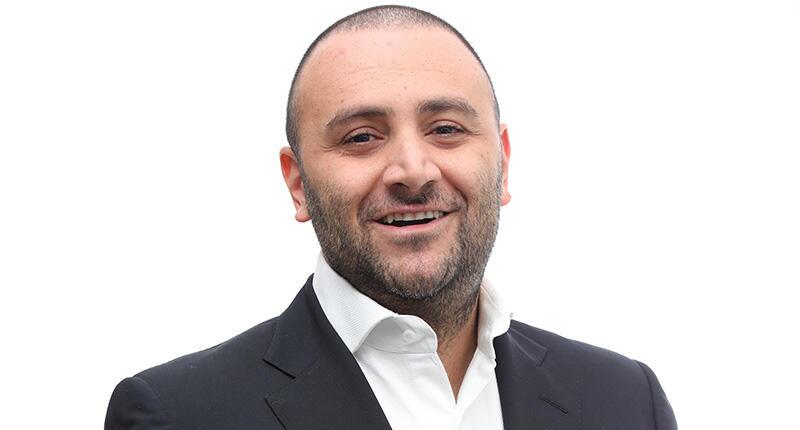The PR Adviser: The Case for Switching to Shopify
Lilian Raji offers advice to a reader frustrated with the current state of their company’s website.

Following publication of my latest column, which emphasized the importance of having a sleek and functional website, I received the following letter from a reader.
Dear Lilian,
I really appreciated your last column. I downloaded your workbook and saw how much we needed to change on our website. Some of what you mentioned in the workbook helped me answer questions I’ve always had about why visitors weren’t doing what I expected. We need to make so many changes your workbook helped me see, but the problem is my company’s owner or, more specifically, our website designer, who has had a long-standing professional relationship with the owner of the company.
I’ve been telling the owner we need to move to Shopify, but the web designer continues to tell the owner that we need a custom site. I believe a big part of [the designer] saying this is because he doesn’t know how to build a Shopify site.
I’m the company’s marketing director and they are looking to me to lead marketing for the company. But I see now our website is the reason we’re not hitting our sales goals. How do I convince the owner that changes are necessary for us to succeed?
Signed,
Woe is My Website
My Dearest Woe,
First, thank you for your feedback on “The Golden Pillars of Luxury Website Design” workbook I created to support my last column.
Those 98 pages took over 100 hours to complete, made long when parts of it disappeared around the 77-hour mark. I’m convinced I harbor gremlins in my condo!
Gizmo and Gremlins aside, I’m grateful to know you found value in my labor of love. It remains available for anyone who hasn’t yet downloaded it as I work on my next project for you lovely PR Adviser loyalists.
If you recall, I began considering my legacy shortly after my mother passed away last year. I’m too much of a capitalist to dedicate my life to social work like my mother did, but helping emerging and small companies thrive … well, that’s something I can get behind.
I’ve since started volunteering with nonprofit organization the Venture Mentoring Team (VMT), working alongside some of the world’s most accomplished executives to help set entrepreneurs, startups, and small business owners on the road to success.
My work with VMT has taken me beyond my jewelry and watch industry comfort zone to help me understand business challenges don’t discriminate across industries; you’d be surprised at what many of you have in common with a fitness company I recently mentored.
While some in the program have seen me as a sorceress when my recommendations magically make their customer acquisition obstacles disappear, I personally only see the obvious.
Although Nigerian juju does run through my Yoruba veins as the great-granddaughter of an Alaafin of Oyo, I don’t need to call upon my ancestors to see why your web designer is poo-pooing Shopify.
“Let’s set the record straight—very few e-commerce sites need to be custom built.”
Your designer makes more money recommending a custom-built site because it ties your company to him now and forevermore.
If you moved to the Shopify platform, anyone could do what he’s doing for a lot less. Shopify sites take significantly less time to build than a custom site and thus, fewer billable hours. Your designer isn’t too keen on giving up that money, honey!
Now, a better businessperson would learn Shopify and focus on service to keep customers loyal.
Alas, laziness can be more attractive than change, particularly when there’s no pressure to change. If your boss refuses to question why you need a custom site, your designer has absolutely no motivation to do what’s in your best interest.
Let’s set the record straight—very few e-commerce sites need to be custom built. By custom built, I mean the designer is personally writing every line of code that creates the website.
One of the reasons is, Google frequently likes to shake things up, demanding your site make changes if you want to remain in Google’s good graces. When this happens, a custom site designer must rewrite existing code to meet the search engine giant’s latest requirements.
Shopify, on the other hand, is designed to adapt to Google’s fickleness.
You begin building your Shopify site with a theme—a customizable site design layout developed by a random designer and available to anyone who wants it.
When the weather changes along with Google’s demands, your theme designer will update their master theme, allowing you to easily make the same update without touching a line of code.
I first started recommending Shopify years ago to small businesses who couldn’t afford an entire team to create stunning sites like the one developed for Cartier.
I just popped over to Cartier.com because, well, do I really need a reason to visit my beloved Cartier?
Today, however, in the interest of research, I decided to review the brand’s website code instead of the collections.
Well, cover me in rose gold, set me with emeralds, onyx, rubellites, and diamonds and call me a Panthère! Wouldn’t you know, Cartier.com is now built on the Shopify platform.
And so is the Tiffany & Co. website. And Todd Reed. And even Rolex, although you can’t buy from Rolex.com.
As we continue our Customer Journey series, I’m going to talk to you about newsletters, and behavior tracking, and affiliate programs.
I’ll throw out names like Klaviyo and Rakuten and Semrush. You’ll learn about SEO and SMS and CRMs, all things to help guide customers into doing exactly what you want on your site.
Shopify makes it easy to integrate these services. So easy, in fact, that your 8-year-old nephew could manage those integrations instead of your designer.
Catch my drift?
Now, before custom site designers start writing code to send me hate email every 15 minutes, may I recommend you learn Shopify? There is still vast opportunity to custom-edit themes to meet your customers’ needs.
Look at the money of it, honey. Keeping your customers on an antiquated model will limit the potential of their e-commerce business and eventually cost you a job anyway.
Learn how to customize Shopify themes now and be a rockstar when, guided by my workbook, you walk them through the golden pillars of ecommerce success.
Now, back to you Woe, my Joe!
I once had a client whose website designer filled their head with nonsensical reasons as to why they needed a custom-built website, despite my insistence that a Shopify site would improve sales.
Month after month, I’d sit in meetings with a pen firmly jabbed into my thigh to keep me from entering yet another losing argument, as the client kept questioning why sales weren’t happening even though my efforts were clearly and successfully driving website traffic.
I stopped working with the client before gangrene could set in, only to now see years later the former client finally has moved to Shopify. I can only shake my head at how much money they lost in sales before making the switch.
“If you want your e-commerce business to be consistently successful, your site must be agile and adapt quickly to new trends in both consumer and search engine behavior. Shopify makes this incredibly easy.”
So, my Wise Woe, print out this column and mail it to your boss anonymously. Or when you’re next dining together, maybe have the chef place his food on top of a laminated copy.
Perhaps for a future office birthday party, have the bakery turn this column into a cake and make sure the slice your boss receives contains the preceding paragraph … anything to help your boss pick up what I’m putting down.
If you want your e-commerce business to be consistently successful, your site must be agile and adapt quickly to new trends in both consumer and search engine behavior. Shopify makes this incredibly easy.
With Cartier, Rolex and Tiffany now using Shopify, there’s no reason you shouldn’t either, particularly since Shopify began as a platform for small businesses.
Alright, my ravishing readers! I’ve got to go lock up my cabinets before midnight, lest my upcoming labor of love goes missing.
In the meantime, don’t forget to download my current labor of love. And send me your most pressing PR questions!
The Latest

The luxury goods company said founder Ippolita Rostagno will remain at the brand’s helm.

Laura Burdese, who joined the Italian luxury brand in 2022, will take on the role in July.

The National Jeweler editors revisit the most noteworthy industry happenings and design trends from 2025.

How Jewelers of America’s 20 Under 40 are leading to ensure a brighter future for the jewelry industry.

Need a gift for the cat lover who has everything? Look no further than our latest Piece of the Week.


It purchased the “Grosse Pièce,” an ultra-complicated Audemars Piguet pocket watch from the ‘20s, for a record-breaking price at Sotheby’s.

The lab-grown diamond grower now offers custom engagement and fashion jewelry through its Kira Custom Lab Jewelry service.

Roseco’s 704-page catalog showcases new lab-grown diamonds, findings, tools & more—available in print or interactive digital editions.

Chandler got his start at Michelson Jewelers and has served as DCA president and CEO since 2001. He will retire at the end of the month.

The boutique is slated to open this week inside Terminal 8, offering pre-owned Rolex watches and more to international travelers.

Sponsored by Digital Monitoring Products

The special-edition egg pendant ingested in a New Zealand jewelry store was recovered after a six-day wait.

Associate Editor Natalie Francisco plays favorites with Piece of the Week, selecting a standout piece of jewelry from each month of 2025.

The “Love and Desire” campaign is inspired by the magic that follows when one’s heart leads the way, said the brand.

Two awardees will receive free tuition for an educational course at the Swiss lab, with flights and lodging included.

Berta de Pablos-Barbier will replace Alexander Lacik at the start of January, two months earlier than expected.

Sotheby’s held its first two jewelry sales at the Breuer building last week, and they totaled nearly $44 million.

Winners will receive free registration and lodging for its fourth annual event in Detroit.

The honorees include a notable jewelry brand, an industry veteran, and an independent retailer.

Carlos Jose Hernandez and Joshua Zuazo were sentenced to life without the possibility of parole in the 2024 murder of Hussein “Sam” Murray.

Yood will serve alongside Eduard Stefanescu, the sustainability manager for C.Hafner, a precious metals refiner in Germany.

The New Orleans jeweler is also hosting pop-up jewelry boutiques in New York City and Dallas.

Set in a Tiffany & Co. necklace, it sold for $4.2 million, the highest price and price per carat paid for a Paraíba tourmaline at auction.

The jeweler’s “Deep Freeze” display showcases its iconic jewelry designs frozen in a vintage icebox.

Take luxury gifting to new heights this holiday season with the jeweler’s showstopping 12-carat sphene ring.

This year's theme is “Unveiling the Depths of the Ocean.”

In its annual report, Pinterest noted an increase in searches for brooches, heirloom jewelry, and ‘80s luxury.




























